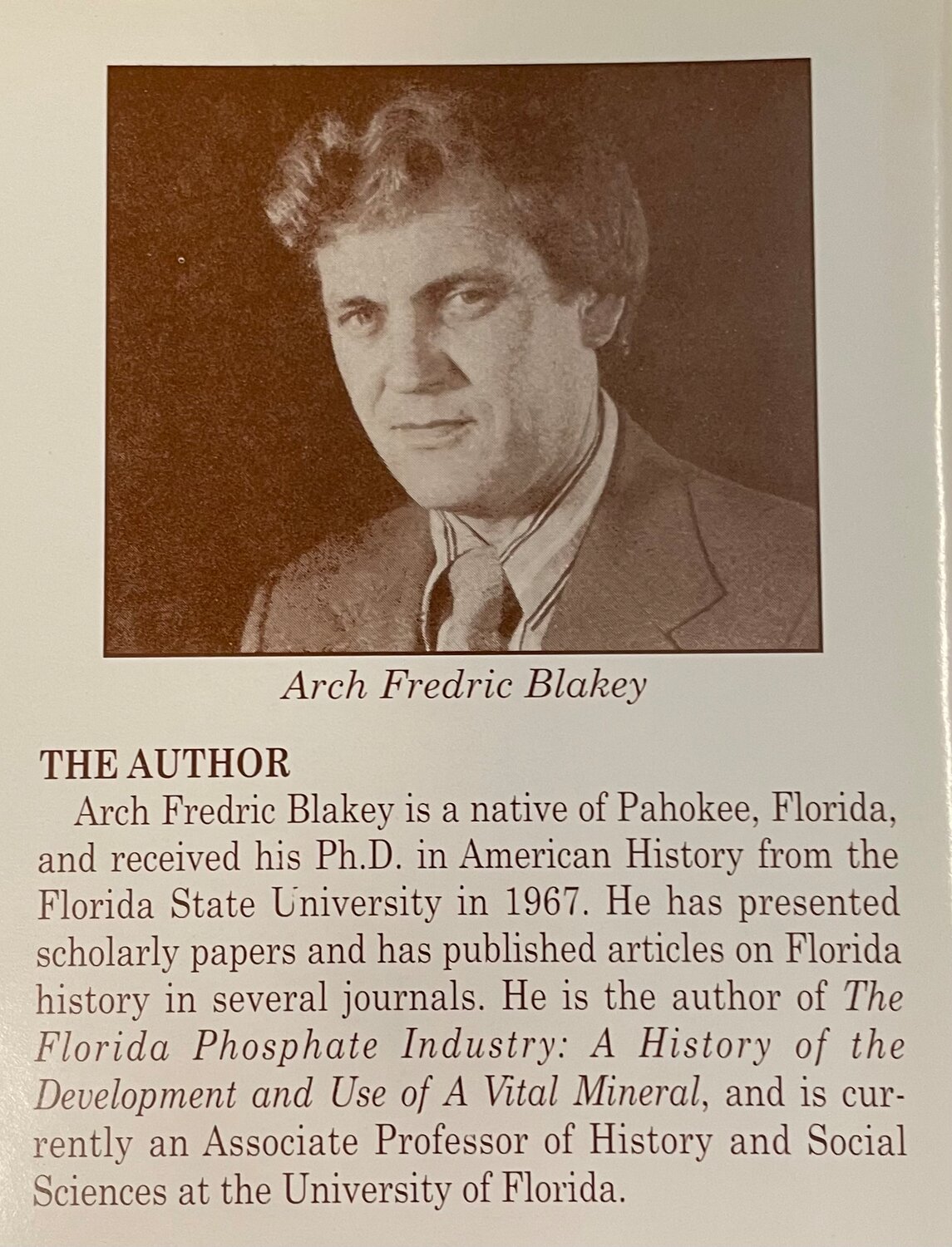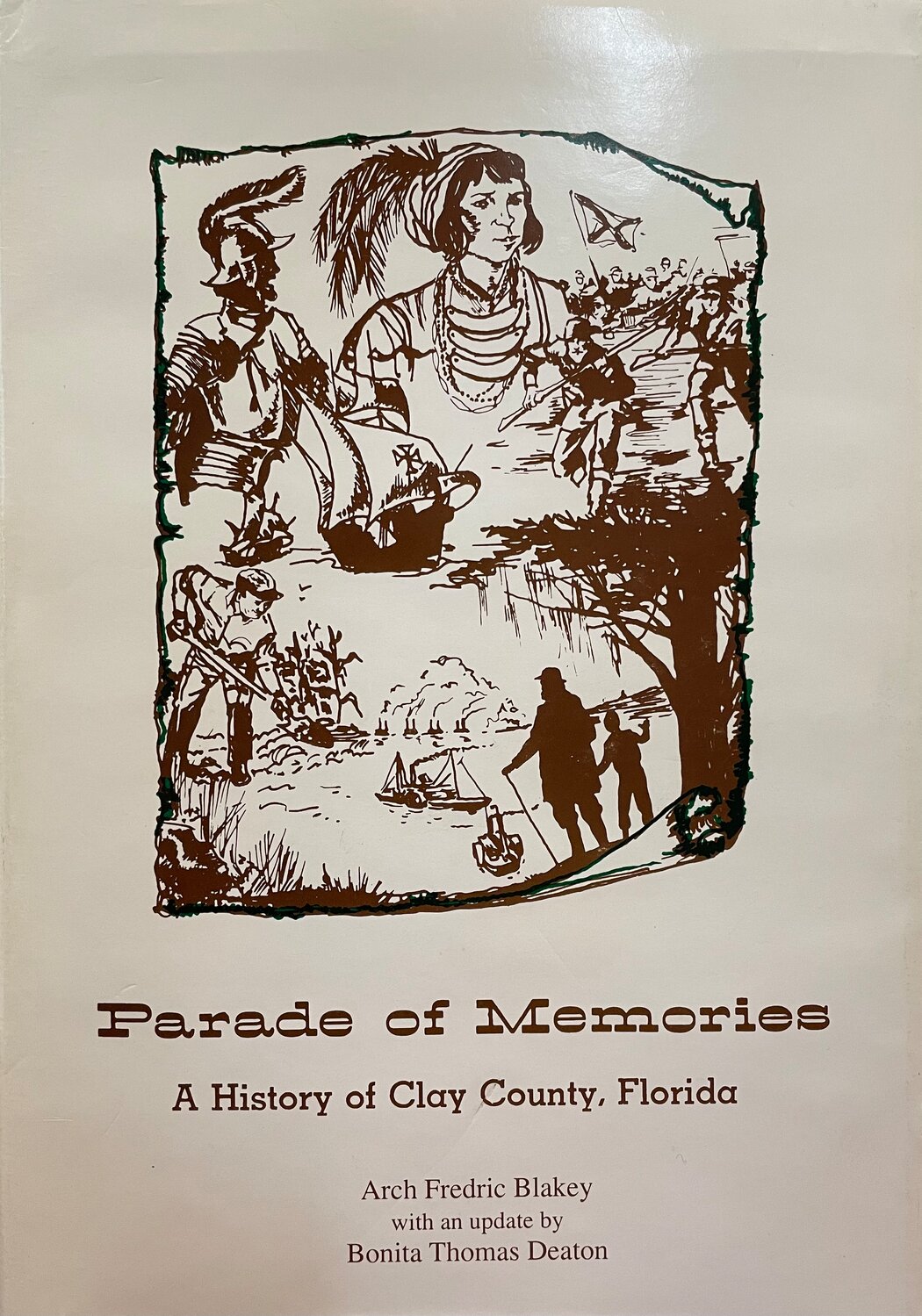Clay County's first historian: Arch Fredric Blakey
Author of 'Parade of Memories: A History of Clay County, Florida'
jack@claytodayonline.com
CLAY COUNTY – Almost half a century ago, Professor Arch Fredric Blakey at the University of Florida agreed to take on a daunting assignment with one of the tightest time crunches of his career.
This item is available in full to subscribers.
Attention subscribers
To continue reading, you will need to either log in to your subscriber account, below, or purchase a new subscription.
Please log in to continueDon't have an ID?Print subscribersIf you're a print subscriber, but do not yet have an online account, click here to create one. Non-subscribersClick here to see your options for subscribing. Single day passYou also have the option of purchasing 24 hours of access, for $1.00. Click here to purchase a single day pass. |
Clay County's first historian: Arch Fredric Blakey
Author of 'Parade of Memories: A History of Clay County, Florida'
Clay County History Month is celebrated every year in May. It is a time of recollection and learning. The focus for this week is Arch Fredric Blakey, the author of the foundational historical book “Parade of Memories: A History of Clay County.” This is part two in a four-part series.
CLAY COUNTY – Almost half a century ago, Professor Arch Fredric Blakey at the University of Florida agreed to take on a daunting assignment with one of the tightest time crunches of his career.
Blakey was commissioned to write Clay County's first history, and his due date was the United States Bicentennial. His book, "Parade of Memories: A History of Clay County, Florida," was to be on the shelf by July 4, 1976.
Counties across Florida were joining in the endeavor to celebrate the bicentennial by hiring historians to author their chronologies. Some of Blakey's contemporaries were commissioned for the same job. However, the difference was they often had two years. Blakey had nine months.
“Truthfully, I did not know a thing about Clay County, but I agreed," Blakey, now retired, said in an interview with Clay Today nearly 50 years later.
After shaking hands with Thomas Ryan Jr., Chairman of the Clay County Historical Commission, and the Board of County Commissioners – T. Hank Bruning, Thaddeus B. Crossley, R. Lee Drawdy, Olin S. Howard, Jr. and Homer L. Newell – Blakey rushed back home to Gainesville.
He was pulled over for speeding before making it to the county line.
Blakey was eager to get started, one-half anxious and the other excited. Clay County had a rich history hidden within old documents, meeting minutes, archived articles, and first-person perspectives. Blakey was honored to be the first to piece it all together during his nine-month journey through time.
Blakey still had classes to teach at UF, but he spent his weekends in Clay County poring through the archives.
Each chapter of the original 10-chapter edition was first written in longhand, transcribed by typewriter, and then presented to the Historical Commission for their input. He said his partnership with the Historical Commission was "very good and harmonious."
Blakey's goal was to remain impartial throughout the historical narrative. Like many areas of the South, Clay County was not immune from slavery, racism, war and death.
"For many historical characters, the descendants are often still living there. I was told, 'It's going to be offensive if you include that,'" Blakey said.
Blakey met with the descendants of Clay County's first pioneering families while composing his manuscript. While often subjective, family stories passed down from generation to generation painted a unique picture of early life in the county.
"Oral history is sometimes the only account available," Blakey said.
Blakey had a whole lineup of people he wanted to interview. Many of those on his list had far-reaching first-person accounts. Many were elderly and unfortunately passed away days before their interview with Blakey.
"That's how history dies," Blakey said.
Blakey also cited various written works, including the Clay County Times (1898-1926) and the Clay County Crescent (1927-1996), the precursor to the Clay Today. As the famous saying goes, journalism is the first draft of history.
The research was challenging. There's a gap in Clay County's historical record from 1858, when Clay separated from Duval, up until 1871 when Green Cove Springs replaced Middleburg as the county seat.
County Clerk Barney McRae was charged with negligence but ultimately acquitted, which Blakey describes on page 104.
The BCC meeting minutes and many other documentation from Clay County's first years as a county during the Civil War are records that remain missing today. If you take a trip to the Clay County Archives, you will notice a missing gap where Books "A," "B" and "C" should be.
Blakey went through the Duval County records to fill in other historical holes.
Early life was challenging in Clay County, which Blakey described as Florida's "no man's land." Indeed, Clay County served as borderlands between the first Spanish colonists and the Native Americans, refuges for Loyalists fleeing the Revolutionary War, battlegrounds during the Seminole Wars and a murky, menacing front during the Civil War.
Blakey's "Parade" – which felt more like a "sprint" – was published on time after months of long nights and long drives back and forth between Gainesville and Green Cove Springs. The book was Clay County's first full, complete and coherent chronology.
The title "Parade" was inspired by Blakey's source, "The St. Johns: A Parade of Diversities" by A.J. Hanna and James Branch Cabell.
Blakey said he can't remember if he and the Historical Commission celebrated after completing the monumental task. The reward was just having the book on the shelf and Clay County's history on paper.
The book is dedicated "to the people of Clay County – past, present and future."
“The parade is long; the memories are numerous; it is an informative and enjoyable journey," Blakey wrote.
The book has inspired other historians, such as Kevin S. Hooper and Maureen Jung. It is nearly impossible to find a Clay County history without "Parade" referenced in its bibliography.
The second edition of "Parade" contains an update written by Bonita Thomas Deaton, which expands the narrative from 1976 to 1995. The second edition is denoted by Deaton's writing credits underneath Blakey's on the front cover, while the first edition only has Blakey's.
Blakey was born in West Palm Beach, grew up in Pahokee, and received his Ph.D. in American History from Florida State University in 1967. He authored three other historical books while a professor at UF from 1968 until 1999. He currently lives in Bell, a small town in Gilchrist County.
During the interview, Blakey revealed that he has been suffering from health problems. Reading, his lifelong joy, is now challenging since he has severe difficulty seeing.
"My father was a carpenter. There got to be a point when he couldn't work with his hands anymore, and I had to step in and make decisions for him and take care of him," Blakey said.
Blakey said he is now reliant on his daughter for nearly everything. She drives him to Jacksonville for medical appointments. Daily life is a daily challenge. As the famous saying goes, history repeats itself. And that irony is not lost on the retired historian.
"I can no longer see," Blakey said. "It kills me."
If there is any silver lining to his ailments (if there is a silver lining to suffering at all), he says that he is thankful to have rekindled his relationship with his daughter.
He looks back fondly on his time in a county he was unfamiliar with, piecing together the jigsaw puzzle that spans centuries, with pieces still missing.
"I still miss it. I enjoyed the research," Blakey said.












